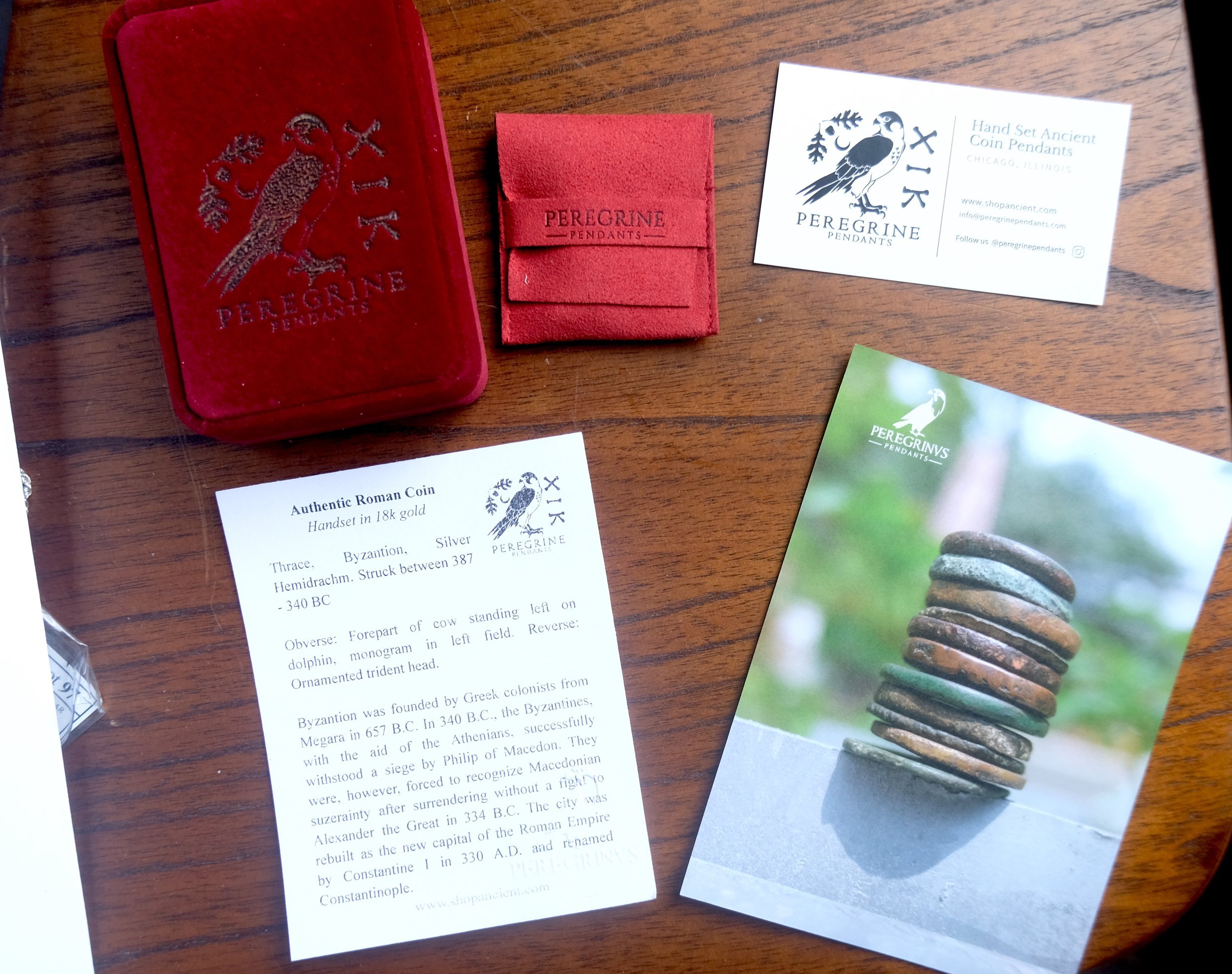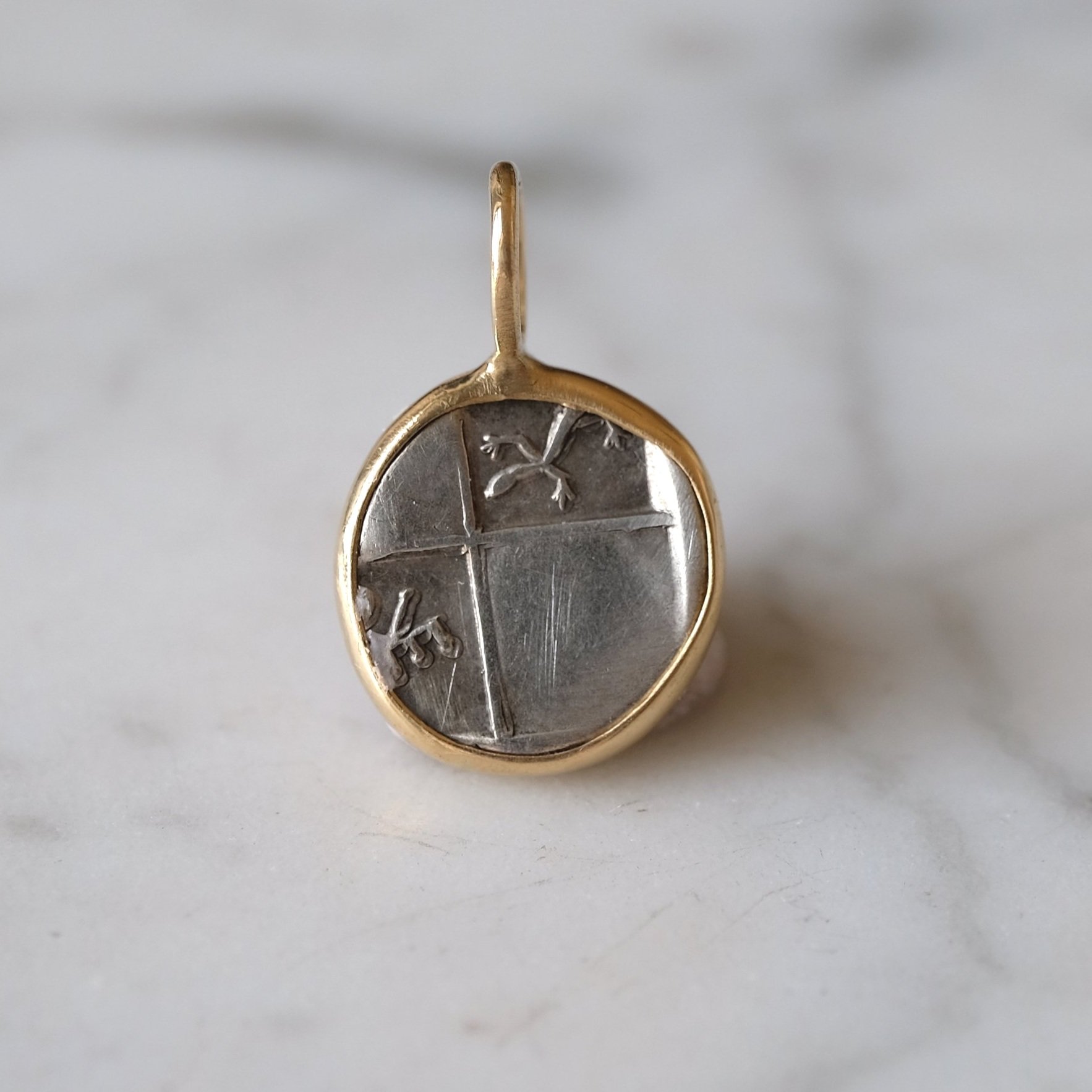 Image 1 of 8
Image 1 of 8

 Image 2 of 8
Image 2 of 8

 Image 3 of 8
Image 3 of 8

 Image 4 of 8
Image 4 of 8

 Image 5 of 8
Image 5 of 8

 Image 6 of 8
Image 6 of 8

 Image 7 of 8
Image 7 of 8

 Image 8 of 8
Image 8 of 8









Indian, Post-Kushan (Jammu and Kashmir) Ardokso (circa 6th century AD) #2
Comes with certificate which guarantees authenticity and provides background information (listed below) on the acquired coin
Indian, Post-Kushan (Jammu and Kashmir) - Kidarite Successors, Vinayaditya
Obverse: abstract Kushan style king standing left; ka in Brahmi to left; to right, jaya and monogram of Kidara in Brahmi
Reverse: Abstract Ardoxsho seated facing, holding filleted investiture garland and cornucopia; ditya in Brahmi to left, śri vinaya in Brahmi down right
Struck 5th-7th century
The Kidarites, or Kidara Huns, were a dynasty that ruled Bactria and adjoining parts of Central Asia and South Asia in the 4th and 5th centuries. The Kidarites belonged to a complex of peoples known collectively in India as the Huna, and in Europe as the Chionites (from the Iranian names Xwn/Xyon), and may even be considered as identical to the Chionites. The 5th century Byzantine historian Priscus called them Kidarite Huns, or "Huns who are Kidarites". The Huna/Xionite tribes are often linked, albeit controversially, to the Huns who invaded Eastern Europe during a similar period. They are entirely different from the Hephthalites, who replaced them about a century later.
Ardoksho (Bactrian script Αρδοχϸο), also Romanised as Ardochsho, Ardokhsho and Ardoxsho, the Iranic goddess of wealth was a female deity of the Kushan Empire, in Central and South Asia during the early part of the 1st millennium CE. She is considered as an east Iranian goddess and alternate name of Lakshmi. She is known in the Avesta as Ashi
Follow on Instagram
****
Why buy from us? I see a lot of pre-made bezels, that are made for modern coins passing as "handmade" jewelry. Each of our coins is carefully handset in a custom made bezel which takes time and skill.
Comes with certificate which guarantees authenticity and provides background information (listed below) on the acquired coin
Indian, Post-Kushan (Jammu and Kashmir) - Kidarite Successors, Vinayaditya
Obverse: abstract Kushan style king standing left; ka in Brahmi to left; to right, jaya and monogram of Kidara in Brahmi
Reverse: Abstract Ardoxsho seated facing, holding filleted investiture garland and cornucopia; ditya in Brahmi to left, śri vinaya in Brahmi down right
Struck 5th-7th century
The Kidarites, or Kidara Huns, were a dynasty that ruled Bactria and adjoining parts of Central Asia and South Asia in the 4th and 5th centuries. The Kidarites belonged to a complex of peoples known collectively in India as the Huna, and in Europe as the Chionites (from the Iranian names Xwn/Xyon), and may even be considered as identical to the Chionites. The 5th century Byzantine historian Priscus called them Kidarite Huns, or "Huns who are Kidarites". The Huna/Xionite tribes are often linked, albeit controversially, to the Huns who invaded Eastern Europe during a similar period. They are entirely different from the Hephthalites, who replaced them about a century later.
Ardoksho (Bactrian script Αρδοχϸο), also Romanised as Ardochsho, Ardokhsho and Ardoxsho, the Iranic goddess of wealth was a female deity of the Kushan Empire, in Central and South Asia during the early part of the 1st millennium CE. She is considered as an east Iranian goddess and alternate name of Lakshmi. She is known in the Avesta as Ashi
Follow on Instagram
****
Why buy from us? I see a lot of pre-made bezels, that are made for modern coins passing as "handmade" jewelry. Each of our coins is carefully handset in a custom made bezel which takes time and skill.
Comes with certificate which guarantees authenticity and provides background information (listed below) on the acquired coin
Indian, Post-Kushan (Jammu and Kashmir) - Kidarite Successors, Vinayaditya
Obverse: abstract Kushan style king standing left; ka in Brahmi to left; to right, jaya and monogram of Kidara in Brahmi
Reverse: Abstract Ardoxsho seated facing, holding filleted investiture garland and cornucopia; ditya in Brahmi to left, śri vinaya in Brahmi down right
Struck 5th-7th century
The Kidarites, or Kidara Huns, were a dynasty that ruled Bactria and adjoining parts of Central Asia and South Asia in the 4th and 5th centuries. The Kidarites belonged to a complex of peoples known collectively in India as the Huna, and in Europe as the Chionites (from the Iranian names Xwn/Xyon), and may even be considered as identical to the Chionites. The 5th century Byzantine historian Priscus called them Kidarite Huns, or "Huns who are Kidarites". The Huna/Xionite tribes are often linked, albeit controversially, to the Huns who invaded Eastern Europe during a similar period. They are entirely different from the Hephthalites, who replaced them about a century later.
Ardoksho (Bactrian script Αρδοχϸο), also Romanised as Ardochsho, Ardokhsho and Ardoxsho, the Iranic goddess of wealth was a female deity of the Kushan Empire, in Central and South Asia during the early part of the 1st millennium CE. She is considered as an east Iranian goddess and alternate name of Lakshmi. She is known in the Avesta as Ashi
Follow on Instagram
****
Why buy from us? I see a lot of pre-made bezels, that are made for modern coins passing as "handmade" jewelry. Each of our coins is carefully handset in a custom made bezel which takes time and skill.

















